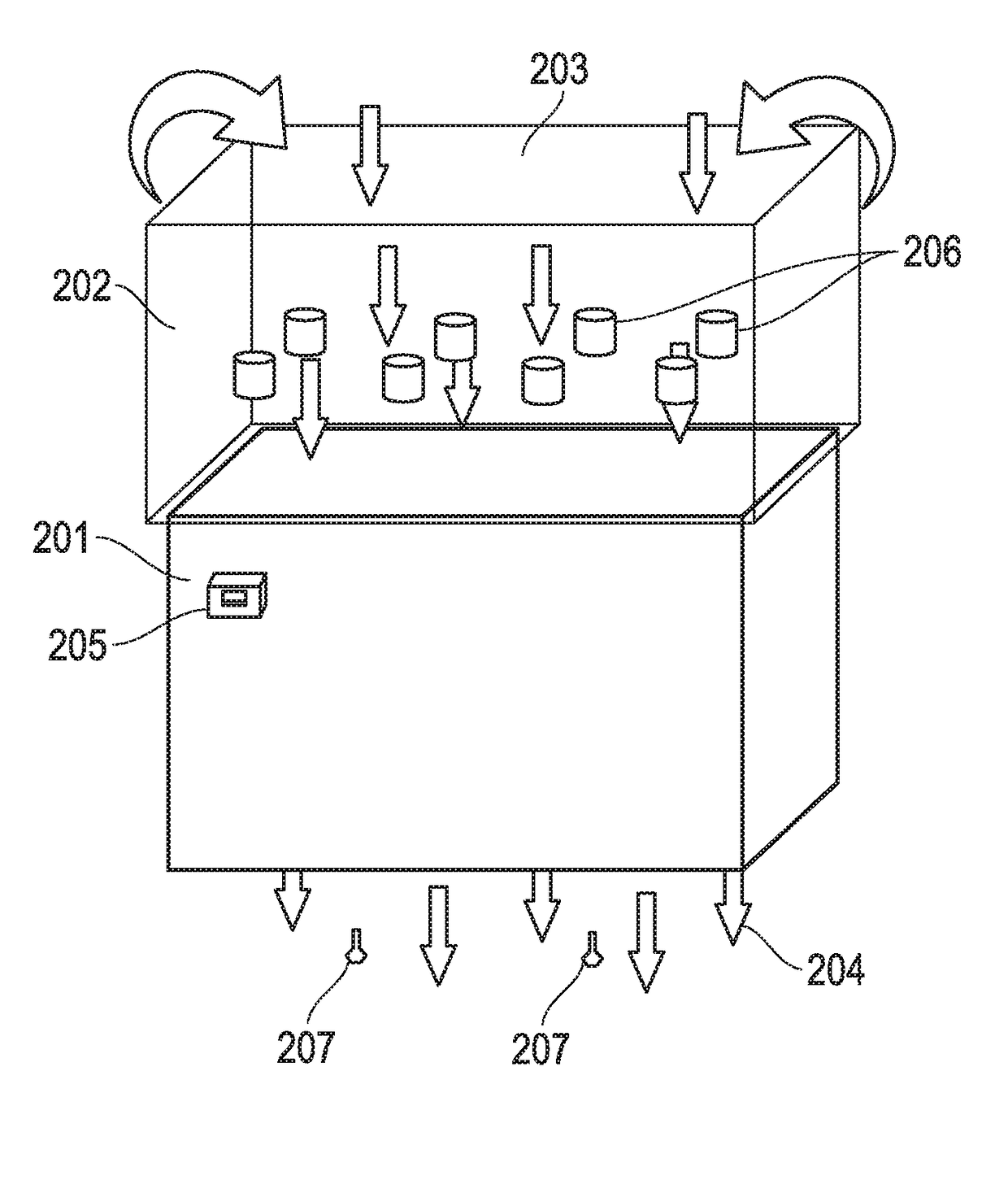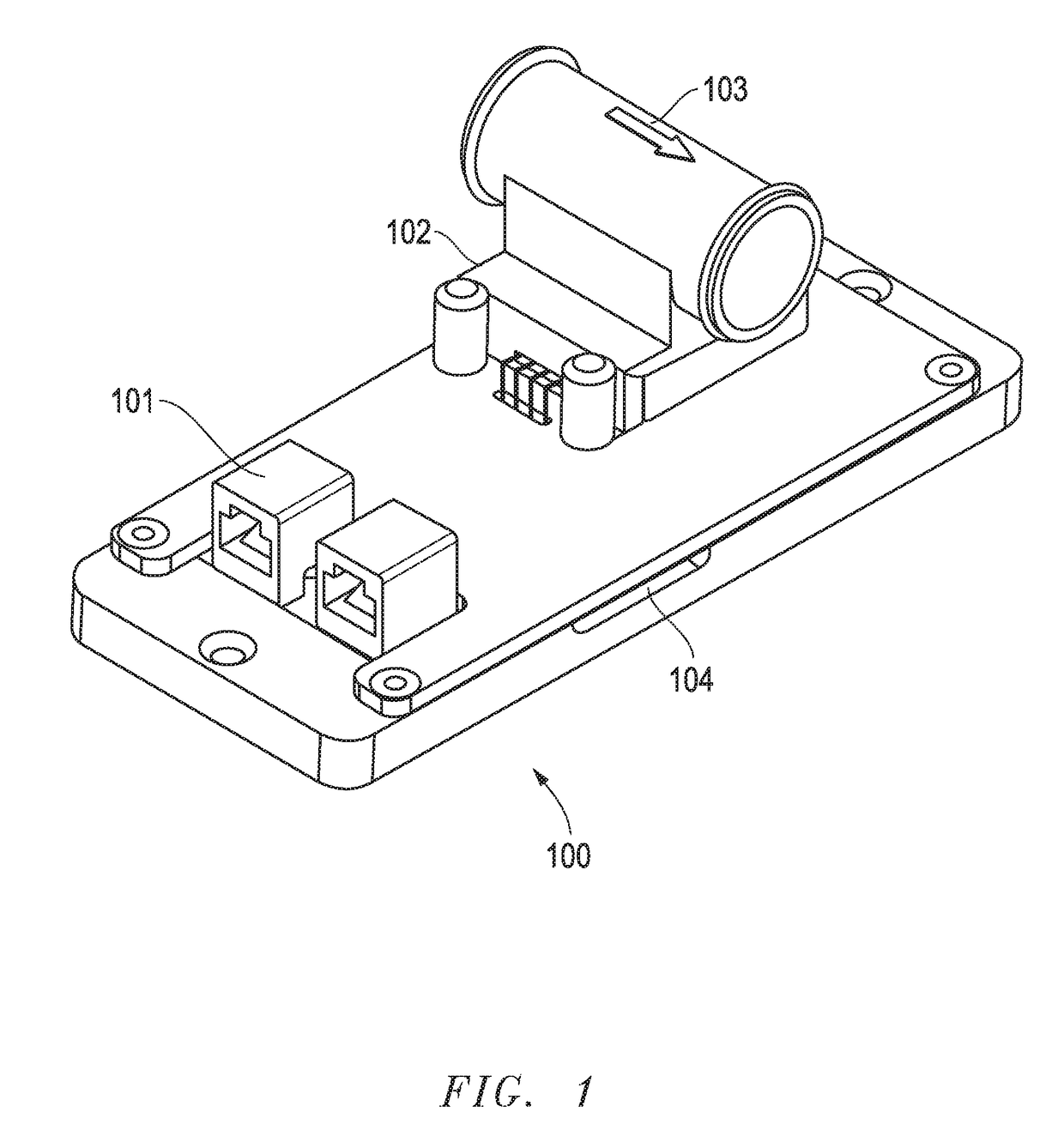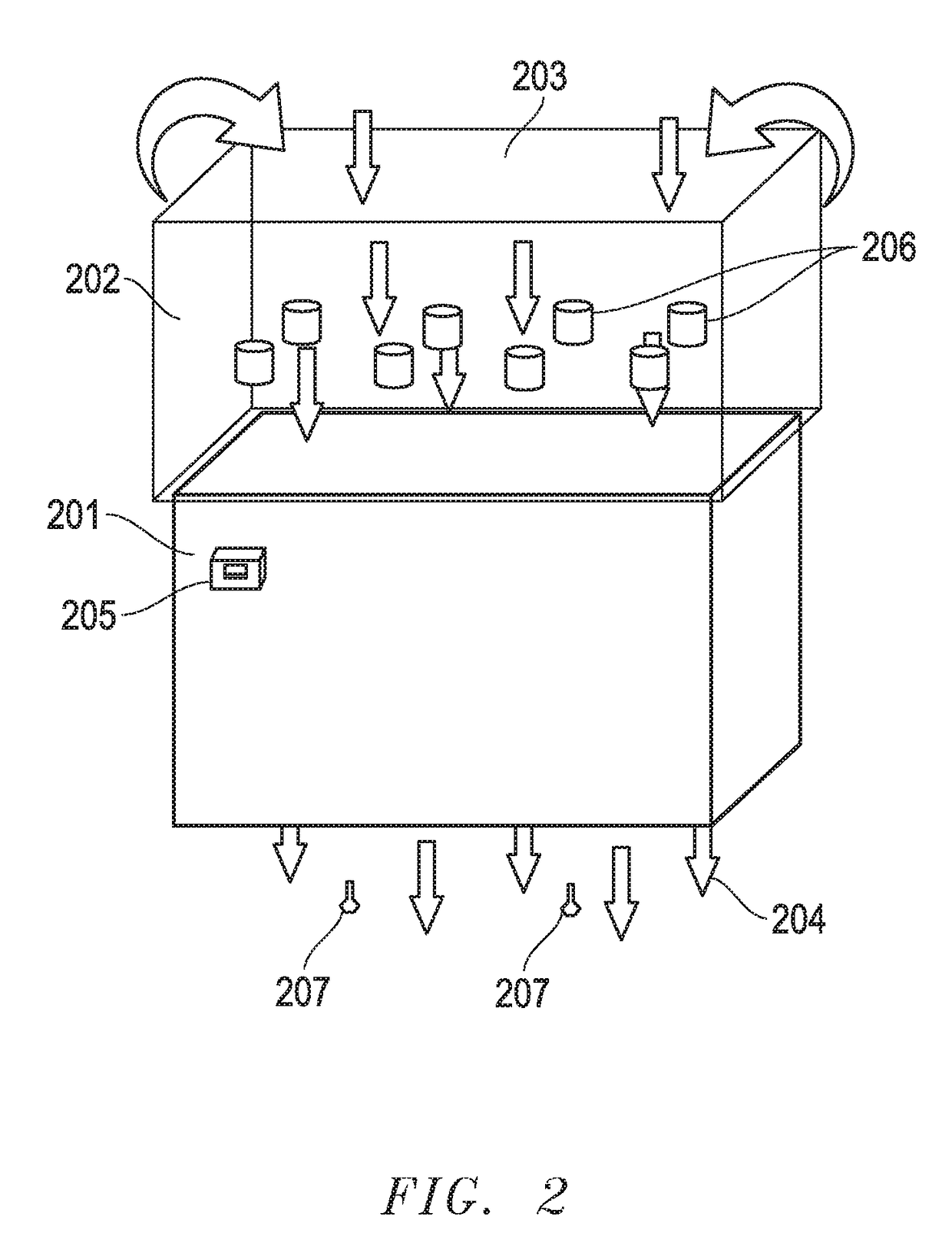Method and system for managing cooling distribution
a technology of cooling distribution and management system, applied in the direction of instruments, material heat development, heat measurement, etc., can solve the problems of increasing the power consumption of the computer room, the density of the computer room, the ineffectiveness of current monitoring and control methods, and the inability to meet the needs of cooling, so as to achieve effective and efficient cooling, the effect of reducing the number of cooling units
- Summary
- Abstract
- Description
- Claims
- Application Information
AI Technical Summary
Benefits of technology
Problems solved by technology
Method used
Image
Examples
Embodiment Construction
[0016]This invention relates to the measuring and monitoring of cooling and heat load in a computer data center or equipment room. The accurate measurement of cooling production, distribution, and usage can identify inefficient implementation of cooling systems. The configuration and use of the presently preferred embodiments are discussed in detail below. It should be appreciated, however, that the present invention provides many applicable inventive concepts that can be embodied in a wide variety of contexts other than managing and controlling cooling distribution. Accordingly, the specific embodiments discussed are merely illustrative of specific ways to make and use the invention, and do not limit the scope of the invention. In addition, the following terms shall have the associated meaning when used herein:
[0017]“BMS” means any building management system used to gather data from and control building related systems and components such as power, cooling and ventilation, lights, ...
PUM
| Property | Measurement | Unit |
|---|---|---|
| time period | aaaaa | aaaaa |
| temperature | aaaaa | aaaaa |
| temperature | aaaaa | aaaaa |
Abstract
Description
Claims
Application Information
 Login to View More
Login to View More - R&D
- Intellectual Property
- Life Sciences
- Materials
- Tech Scout
- Unparalleled Data Quality
- Higher Quality Content
- 60% Fewer Hallucinations
Browse by: Latest US Patents, China's latest patents, Technical Efficacy Thesaurus, Application Domain, Technology Topic, Popular Technical Reports.
© 2025 PatSnap. All rights reserved.Legal|Privacy policy|Modern Slavery Act Transparency Statement|Sitemap|About US| Contact US: help@patsnap.com



